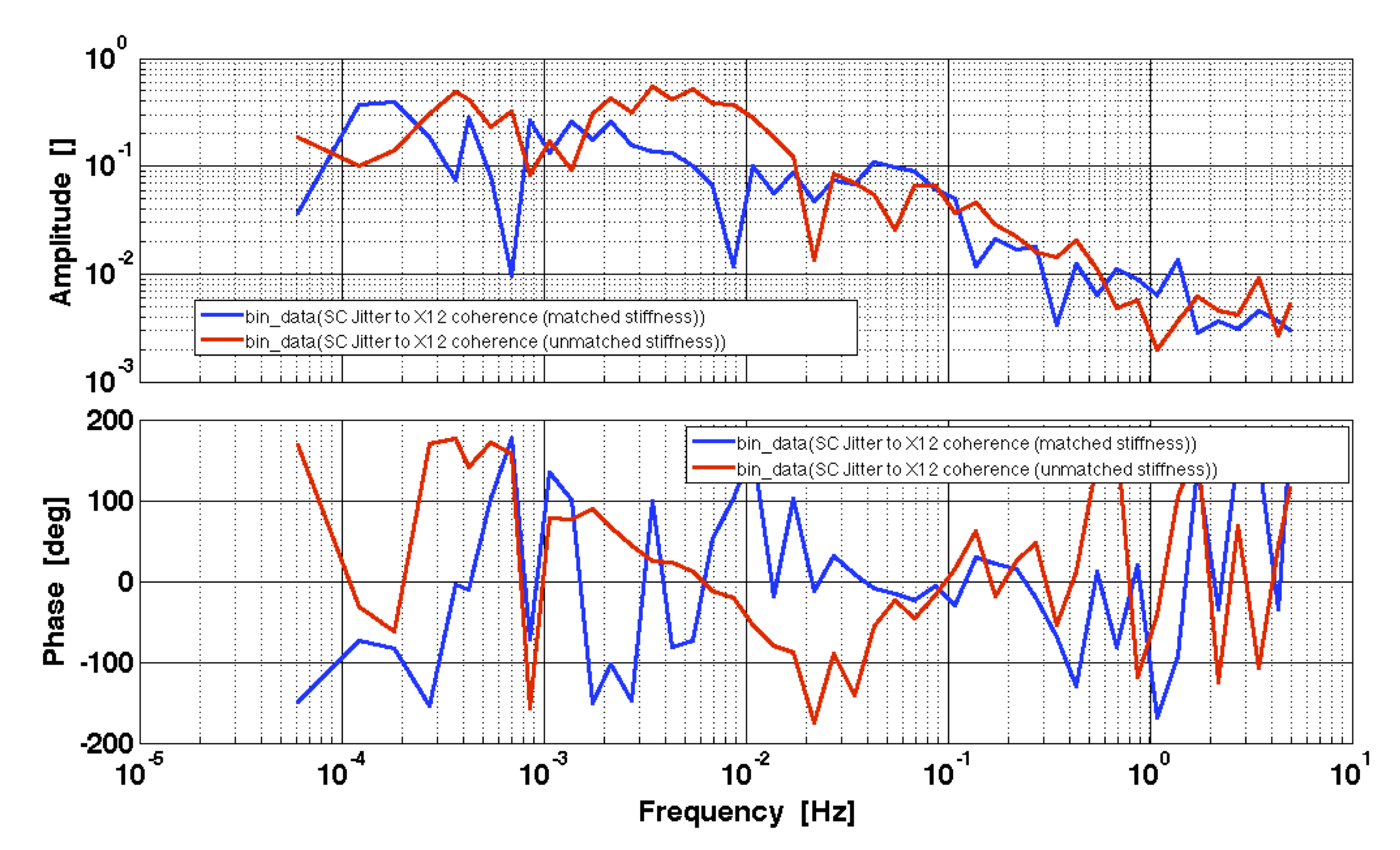

| LTPDA Toolbox™ | contents |   |
Simulating LPF with matched stiffness involves bringing together the details of the previous section. The following code snippet builds two versions of the LPF model: one with matched stiffness, one with unmatched stiffness.
% Configuration plist for building our model with matched stiffness
modelPlistMatched = plist(...
'built-in', 'LPF', ...
'EOM_TM1_STIFF_XX', 2e-6, ...
'EOM_TM2_STIFF_XX', 2e-6 ...
);
% Configuration plist for building our model with unmatched stiffness
modelPlistUnmatched = plist(...
'built-in', 'LPF', ...
'EOM_TM1_STIFF_XX', 1e-6, ...
'EOM_TM2_STIFF_XX', 5e-6 ...
);
% Build the LPF model with our configuration plists
lpfMatched = ssm(modelPlistMatched);
lpfUnmatched = ssm(modelPlistUnmatched);
% Create a covariance matrix and port list sized for our LPF model
cov_matrix = lpfMatched.generateCovariance();
% Define the simulation plist for a 100,000s simulation
simPlist = plist(...
'CPSD Variable Names', cov_matrix.find('names'), ...
'CPSD', cov_matrix.find('cov'), ...
'Return outputs', {'IFO.x1', 'IFO.x12', 'DFACS.sc_x', 'DFACS.tm2_x'}, ...
'Nsamples', 1000000 ...
);
% Run the simulations
outMatched = simulate(lpfMatched, simPlist);
outUnmatched = simulate(lpfUnmatched, simPlist);
% Compare the coherence between force on SC and the diff. displacement
% Unpack the outputs from the simulations
[o1m, o12m, F_cmd_Xm, F_cmd_x2m] = unpack(outMatched);
[o1u, o12u, F_cmd_Xu, F_cmd_x2u] = unpack(outUnmatched);
% Compute the coherence
coherePlist = plist(...
'navs', 16, ...
'order', 1 ...
);
Cm = cohere(F_cmd_Xm, o12m, coherePlist);
Cm.setName('SC Jitter to X12 coherence (matched stiffness)');
Cu = cohere(F_cmd_Xu, o12u, coherePlist);
Cu.setName('SC Jitter to X12 coherence (unmatched stiffness)');
% Bin the data to do some frequency-domain averaging
Cm_binned = Cm.bin_data;
Cu_binned = Cu.bin_data;
% Plot the results with error bars
iplot(Cm_binned, Cu_binned)

 |
Changing system parameters | Topic 3 - Estimation of equivalent acceleration. |  |
©LTP Team